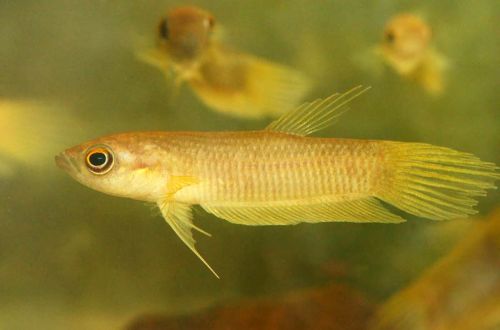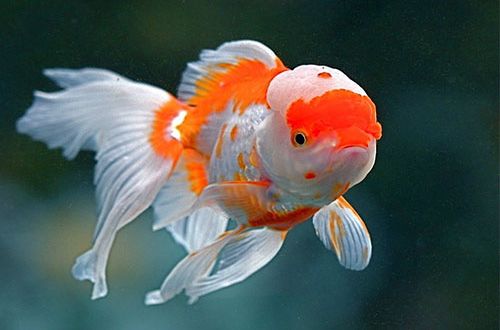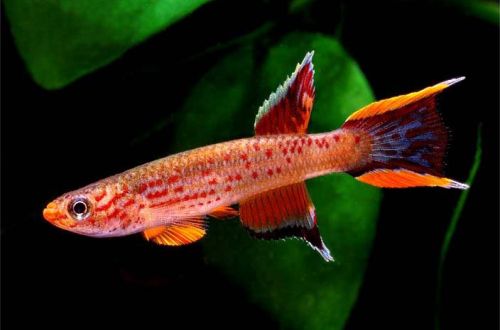
Kopella Coptic
Copella Copta, scientific name Copella compta, belongs to the Lebiasinidae family (Lebiasinidae). The fish comes from the subtropics of South America. Inhabits numerous forest streams, rivers in the upper reaches of the Rio Negro and Orinoco in Venezuela and Colombia.

Contents
Description
Adults reach a length of about 5 cm. Males are somewhat larger, the color is beige with a pattern in the form of a wide horizontal stripe. In some cases, pink shades may predominate in the color. The scales are large with dark pigmentation, giving a reticulate pattern. Reddish streaks are visible on the caudal peduncle. Females are noticeably smaller and inferior to males in the brightness of color.
Behavior and Compatibility
Peaceful shy fish. Larger and/or overly mobile species should be avoided. As neighbors in the aquarium, it is worth considering representatives of other Kopell and Pirrulin, as well as fish that live mainly in the bottom layer.
Brief information:
- The volume of the aquarium – from 80 liters.
- Temperature – 24-28°C
- Value pH — 6.0–7.0
- Water hardness – 2–8 dH
- Substrate type – any
- Lighting – subdued
- Brackish water – no
- Water movement is weak
- The size of the fish is up to 5 cm.
- Nutrition – any food (floating) with a high protein content
- Temperament – peaceful
- Keeping in a group of 8-10 individuals
Maintenance and care, arrangement of the aquarium
The optimal size of the aquarium for a flock of 8-10 individuals starts from 80-100 liters. The surface area of the water is more important than the depth of the reservoir. Copella Copta prefers to stay in the upper layer of water. Needs plenty of shelter in the form of floating plants. Everything below is not essential for her, so the rest of the design is selected at the discretion of the aquarist or based on the needs of other fish. The lighting is subdued.
Maintaining stable water conditions is key in the long term. It is necessary to provide warm soft slightly acidic water. You may need a system to reduce the hardness of the water, for example, in the form of special filter media.
When choosing the type of filter, it is worth remembering that the fish do not tolerate excessive water movement, namely the filtration system is often the main cause of internal flow.
They tend to jump out of the aquarium, the presence of a lid is required.
Food
In nature, Kopella copta preys on small aquatic insects and their larvae, therefore, a diet rich in protein should be provided in the home aquarium, while the products should remain on the surface for a long time.
Breeding / breeding
This group of fish has developed an unusual strategy for reproduction and protection of offspring. During the spawning period, Copella Coptas lay their eggs on low-hanging leaves. Male and female synchronously, clinging to each other, jump out of the water in the direction of the leaf. Once on it, the couple manages to fix several eggs and fertilize them.
At the end of spawning, the female swims away, and the male remains nearby. Its main task is to irrigate the masonry with splashes of water to prevent it from drying out.
In some cases, masonry can be formed on the surface of a wide leaf of an aquatic plant.





